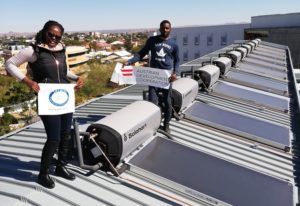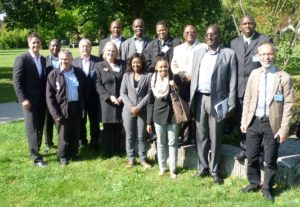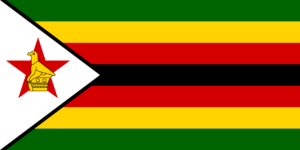Lesotho, Mozambique and Zimbabwe: Solar Thermal Policies under Development
March 10, 2016The minister of energy and power development in Zimbabwe announced a national solar water heating programme on 30 September 2015. Key elements of this programme were a national solar obligation, which required all newbuilds to be equipped with a solar water heater instead of an electric geyser, and an obligation to replace existing electric geysers within five years. According to a news article from the end of September 2015 published on Technomag.co.zw, there were about 250,000 electric geysers in operation across the country. A successful implementation of the ban of electric geysers would save Zimbabweans 300 MW. A news piece published on newsday.co.zw in January 2016 said that the nation’s power demand was currently estimated at about 2,200 MW compared to available generation capacities of around 1,200 MW. The article on the latter website also quotes Zimbabwe’s Energy and Power Development Minister, Samuel Undenge, as supporting the local manufacture of solar water heaters: “The government had instructed Zesa Enterprises to embark on the production of solar water heaters and would go for three additional local manufacturers.”
 Training campus of the Bethel Business and Community Development Centre in Lesotho with thermosiphon and pumped systems
Training campus of the Bethel Business and Community Development Centre in Lesotho with thermosiphon and pumped systems- Phase out the use of electric geysers in all existing public buildings and introduce solar water heating systems and heat pump systems.
- Require all new public buildings with hot water demand to install solar water heaters.
- Encourage the replacement of electric geysers with solar water heaters in industrial, commercial, residential and general-purpose segments
The government of Mozambique put serious effort in supporting the draft of the Solar Thermal Technology Roadmap, which was published in November 2015 after three stakeholder workshops between May 2013 and March and September 2015 in Maputo (see the attached document). In contrast to South Africa, where the roadmap was published without a foreword by the Department of Energy after a delay of several months, the Mozambican Minister of Science, Technology, Higher Education and Professional Training, Jorge Olívio Nhambiu, confirmed in his opening words the target of installing 0.1 m² collector area per capita by 2030, translating into an overall 3.4 million m² by that time. The roadmap even sets individual targets for residential housing, public buildings, hotels and lodges, as well as industrial and commercial applications, and defines actions for each of these segments.
|
Segment targets |
|||
| Thermosiphon system for the residential segment |
50 % |
11.9 GWth |
1,700,000 m² |
| Tourism |
25 % |
5.95 GWth |
850,000 m² |
| Public sector, such as hospitals, student hotels and large service buildings |
15 % |
3.57 GWth |
510,000 m² |
| Industrial and commercial applications |
10% |
2.38 GWth |
340,000 m² |
| Total |
|
3,400,000 m² |
|
- At least five demonstration SWH systems, installed for medium-size tourism operators
- Data on hot water use in tourism, correlated with other data to allow for crude modelling of hot water needs in this market segment
- At least 2 Mozambican plumbing companies trained to design, install and maintain small to medium-size (pumped) solar thermal systems
- The science and technology park as being fully capable of certifying the quality of solar water heaters
- Draft for a roll-out programme for SWHs in tourism, the public and residential segment.


